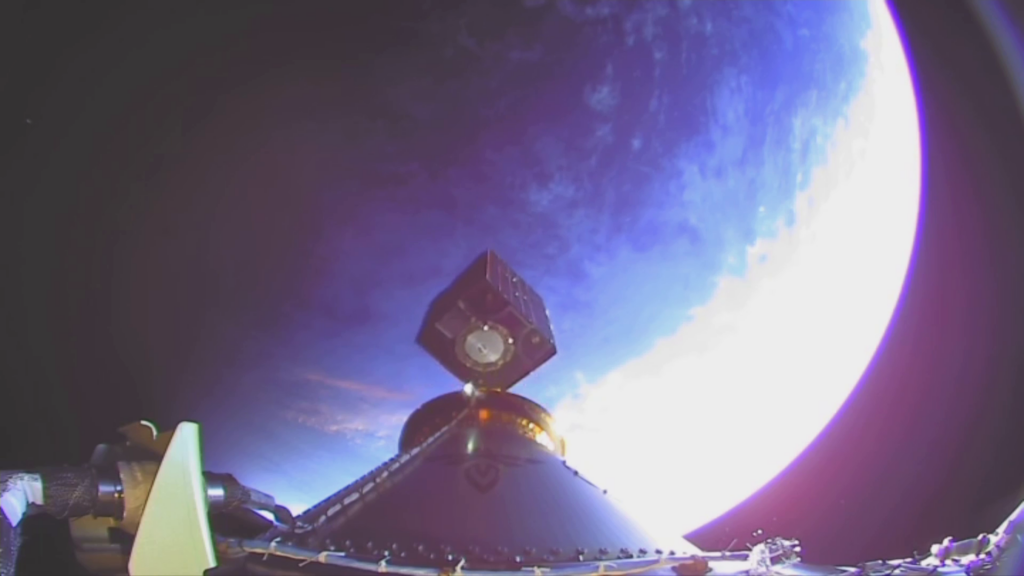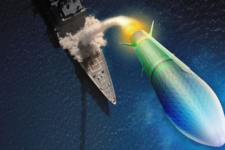
Against the backdrop of the Earth, Firefly Aerospace’s Alpha FLTA003 successfully deployed the Victus Nox satellite into orbit after launching Sept. 14 at 7:28 p.m. PDT from Space Launch Complex 2 West (SLC-2W) at Vandenberg Space Force Base, Calif. (Courtesy photo: Firefly Aerospace)
WASHINGTON — Victus Nox, the Space Force’s mission to turn around a satellite launch within a 24-hour window, on Thursday lifted off successfully, and most importantly, on time.
“In a major advancement of Tactically Responsive Space (TacRS) capabilities, Space Systems Command (SSC) and Firefly Aerospace successfully encapsulated a Millennium Space Systems-built space vehicle, mated it to Firefly’s Alpha launch vehicle, and completed all final launch preparations in 24 hours,” SSC said in a press release.
The entire process from the checkered flag to the rocket engine blast actually took 27 hours, because liftoff had to wait for the launch window — the time period in which the rocket has to be launched in order to reach its intended orbit — to open up, the SSC release explained.
SSC last September announced it had contracted Millennium to produce the Victus Nox satellite and ground segment, and Firefly Aerospace to provide the launch for the TacRS-3 “operational” experiment. The mini-fridge-sized satellite will provide space domain awareness data to the Space Force. The mission is being managed by SSC’s Space Safari office, established to directly respond to urgent launch needs of Space Command and/or other Combatant Commands.
So-called “responsive launch” — the ability to launch practically on demand, formerly known as Operationally Responsive Space — has been a Holy Grail for the Pentagon for more than a decade. In the past, typical Defense Department space launches took anywhere from two to five years. The last responsive space experiment, the June 13, 2021 launch of TacRL-2, set a record of 21 days, SSC’s press release noted.
Thus Victus Nox, with just over a day turnaround, is a big victory for the Space Force.
“This mission highlights significant progress towards meeting emerging challenges in space,” said Lt. Col. MacKenzie Birchenough, Space Safari materiel leader. “While space has been viewed as a strategic theater for a long time, the advancement of TacRS capabilities represents a paradigm shift for the National Security Space enterprise.”
Indeed, the entire process was a sprint for SSC and the contractors alike. Less than a year after being contracted, Millenium and Firefly entered a “hot standby” phase, awaiting a go-notice from SSC. Once that was given, the satellite “was transported 165 miles from Millennium’s El Segundo facility to Vandenberg Space Force Base where it was tested, fueled, and mated to the launch adapter in just under 58 hours, significantly faster than the typical timeline of weeks or months.” The contractors and the SSC team then remained on 24/7 alert, waiting for the order to launch.
Having reached its target altitude in low Earth orbit, the next objective for Victus Nox is to begin operations in under 48 hours, the SSC release added.
US allies cite progress, but say more needed for collective response to space threats
US Space Command’s recently realigned and renamed Joint Commercial Operations cell is one example of successful joint operations, agreed the four European space leaders.


























